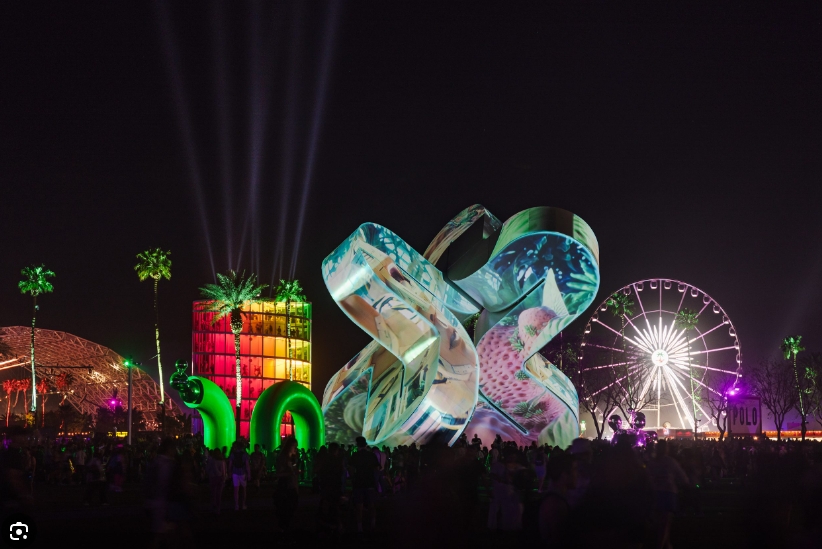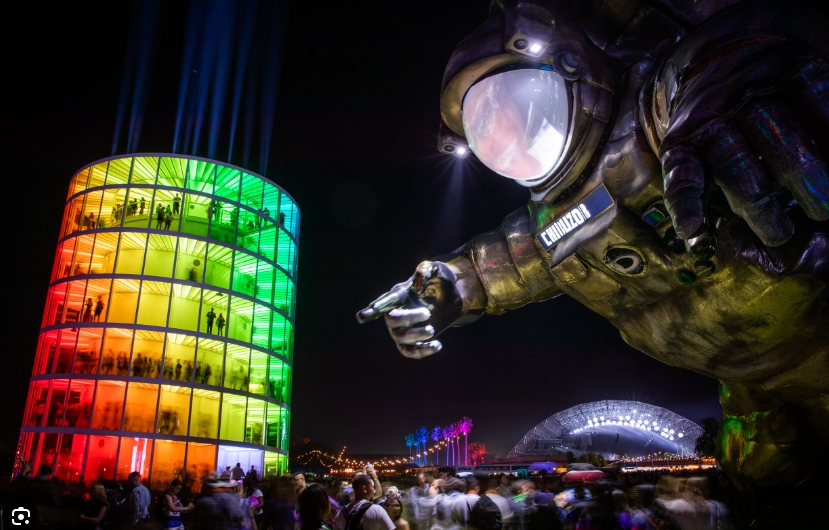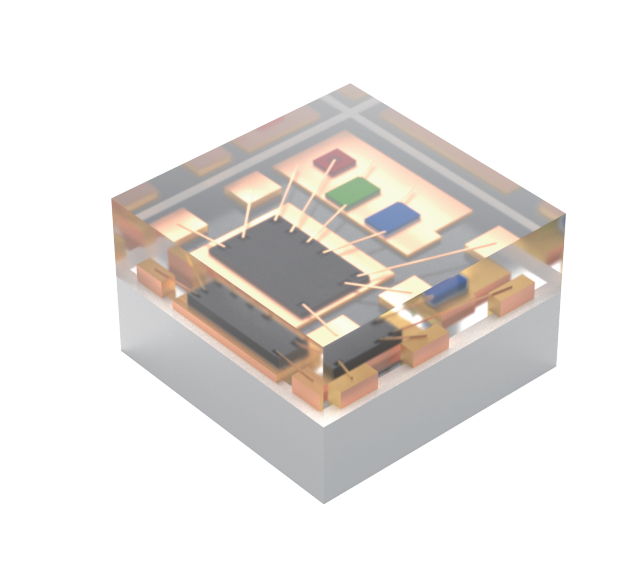A holographic LED display, also known as a holographic LED screen or hologram LED display, is a type of display technology that combines LED technology with holographic principles to create the illusion of three-dimensional holographic images or videos. Here in this article, we’ll talk about the features, pros and cons, application scenarios of hologram LED screens, and also some famous holographic screens around the world.

holographic screen – Coachella Valley Music & Arts Festival
Holographic LED displays use an array of LEDs to create the perception of three-dimensional holographic content floating in space. The content appears to have depth and can be viewed from different angles.
Holographic LED displays offer transparency, allowing viewers to see through the display when the LEDs are turned off. This feature enables the integration of holographic content into real-world environments without completely obstructing the view.
LED technology provides high brightness and contrast levels, ensuring that holographic content is vivid and visually appealing, even in well-lit environments.
Holographic LED displays typically offer a wide viewing angle, allowing multiple viewers to see the holographic content simultaneously from various positions without significant degradation in image quality.

holographic screen – Coachella Valley Music & Arts Festival
Holographic LED displays can create captivating and attention-grabbing visual experiences, making them suitable for marketing, advertising, and entertainment applications.
Holographic LED displays have the potential to engage viewers in interactive experiences by combining gesture recognition or touch interaction technologies. This interactivity can enhance user engagement and immersion.
Holographic LED displays can be used in various settings, including retail stores, exhibitions, museums, and events. They offer flexibility in showcasing products, displaying information, or creating unique visual installations.
Holographic LED displays can be scaled up or down in size to accommodate different spatial requirements, from small installations to large-scale displays.
Holographic LED displays typically have a limited effective viewing distance. The perception of the 3D effect diminishes as the viewer moves farther away from the display.
Holographic LED displays can be more expensive compared to traditional 2D LED displays. The cost of the technology, the complexity of the system, and the specialized content creation can contribute to the higher price point.
Creating content specifically optimized for holographic LED displays can be technically challenging and time-consuming. The content must be carefully designed to maximize the effectiveness of the 3D effect and ensure visual coherence.
Holographic LED displays may have limitations in displaying standard 2D content. The best visual impact is achieved when content is specifically designed and optimized for the holographic display, which may restrict compatibility with existing content formats.
Holographic LED screens find application in various scenarios.
Holographic LED screens are often used in advertising and marketing campaigns to create attention-grabbing and immersive experiences. They can showcase products or brand messages in a visually striking and memorable way, capturing the audience’s attention and generating brand awareness.
Holographic LED screens are employed in retail environments and exhibitions to showcase products, demonstrate features, or provide interactive experiences. They can create virtual product displays, 3D models, or animations that engage customers and enhance the shopping or exhibition experience.
Holographic LED screens are utilized in the entertainment industry for live performances, concerts, and events. They can project holographic images of performers, create 3D visual effects, or provide immersive backdrops that enhance the overall entertainment experience.
Holographic LED screens are used in museums and art galleries to present interactive exhibits, educational content, or visual storytelling. They can bring historical events, artifacts, or artworks to life in a dynamic and engaging manner, offering visitors a unique and immersive experience.
Holographic LED screens have applications in education and training settings. They can be used to display 3D models, simulations, or virtual environments, providing an enhanced visual learning experience. Holographic displays can be particularly useful in fields such as medical training, architecture, or engineering.
Holographic LED screens are employed in the hospitality and tourism industry to create captivating and informative displays. They can showcase destination highlights, provide wayfinding information, or offer virtual tours, enhancing the guest experience and attracting visitors.
Holographic LED screens are utilized during product launches and presentations to create a memorable and impactful visual experience. They can display 3D product renderings, animations, or interactive content that helps convey the features and benefits of a product or concept.
These are just a few examples of the application scenarios for holographic LED screens. The versatility and visual impact of holographic displays make them suitable for a wide range of industries and purposes, where creating immersive and engaging experiences is desired.
Here are a few famous holographic LED screens around the world.
The 15-metre high display wall comprises 420 individual SmartV Hypervsn displays, and can be found alongside humanoid robots in the atrium at the newly opened Sphere in Las Vegas. Hypervn’s largest ever holographic display, measuring 9 x 15 meters, has been installed in the atrium at Sphere Las Vegas.
Hologauze, a transparent holographic screen, has been used at the Coachella Music Festival in California, USA. It has been employed to create holographic visuals and special effects during live performances.
The Eurovision Song Contest, an annual international music competition, has featured the HoloNet, a holographic LED screen. It has been used to create immersive and visually stunning holographic elements during performances.
China has a wide market for LED display technologies including holographic screens. Also there are a lot of LED s and LED display manufacturers across the country, and most of them are located in Shenzhen, a special economic zone initiated in 1980’. A lot of holographic LED screens were built there in shopping malls, museums, and tourist attractions, such as the Holographic Theater in Shenzhen.

Kinglight 1515-IC LEDs are typically designed for making creative LED displays such as holographic LED screen, and transpartent LED screen.
Japan is also known for its innovative use of holographic LED displays. For example, the “Gatebox”, a home assistant device, uses a holographic display to project a virtual character that interacts with users. Additionally, there have been holographic displays used in retail stores and entertainment venues across Japan.